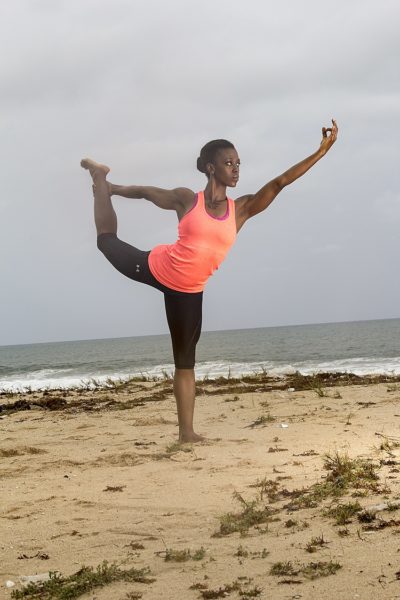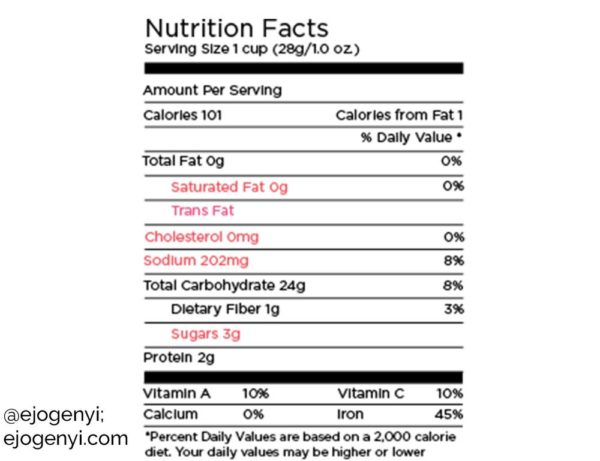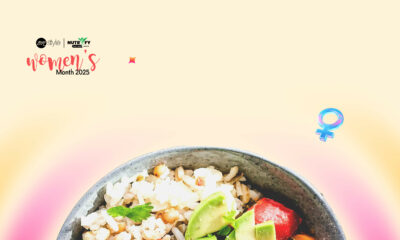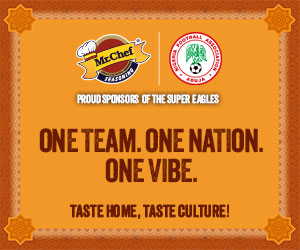Features
Ej Ogenyi: Four Ways Nutrition Labels Can Help You Make Healthier Food Choices
 If you’re trying to lose weight, you’ve probably taken steps to change the types of food you’re eating and exercise more. But the question always arises, what more can I do to eat healthier and speed up my weight loss? Calorie counting almost always comes on the radar. But when not all the foods you eat have a nutrition label, committing to doing this can be hard.
If you’re trying to lose weight, you’ve probably taken steps to change the types of food you’re eating and exercise more. But the question always arises, what more can I do to eat healthier and speed up my weight loss? Calorie counting almost always comes on the radar. But when not all the foods you eat have a nutrition label, committing to doing this can be hard.
If you don’t count calories for this (or any other) reason, there are still ways that a nutrition label can benefit you. This is especially for those moments when you’re about to eat something out of a box or are making a decision between two different types of packaged foods. This post will show you how the nutrition label and the ingredients list on your packaged meal can help you make healthier eating choices
Know the Types of Fats in Your Food
Not all fats are bad for you, and reading the packaging on your food can help you determine the types of fats in your food. When you’re trying to eat healthier, you want to prioritize healthy unsaturated fats. These are fats that are liquid at room temperature and have not been altered using a manufacturing process. The fats that you want to avoid are saturated fats – mostly from animal sources – and trans fats – manufactured fats.
In some countries, nutrition labels are required to break down the amount of saturated fats and trans fats in any packaged product with a label. But if you don’t live in one of these countries, you can still find out what’s in your food by reading the ingredient list. If the list includes any animal fat, it’s likely to contain saturated fats. Examples of animal fats that are used in ingredient lists include lard or butter in cookies. If the list includes anything that starts with partially hydrogenated or hydrogenated, then it’s likely to contain the trans fat that you want to do everything in your power to avoid.
Determine the Food has Whole Grains or Not
Whole grains products have a characteristic brown color that can either be a blessing or a curse. It’s a blessing because it can make them easy to identify, and a curse when that very color is used to fool you into thinking that a food contains whole grains. This brings me to the one thing you need to remember: just because it’s brown doesn’t mean it contains whole grains. Another thing worth remembering is that: just because it has “wheat” called out in the ingredient list doesn’t mean it’s a whole grain.
Manufacturers use these two things the color brown and the word wheat to deceive us into thinking that some refined flour products are better than they actually are. Easy ways to avoid this trickery is to read the nutrition label to see how much fiber it contains. If it has a carbohydrate to fiber ratio of at least 10:1 (e.g. 30 g of carbohydrates to 3 g of fiber) then it’s likely to actually have some whole grains in it. The ingredient list is also a great place to look – if the ingredients has “whole wheat” or “whole – whatever grain it is” then it is a whole grain product. Regular refined flour is technically still wheat flour so manufacturers can say wheat flour without technically lying to you.
If you are reading a nutrition label in the U.S. you can also determine how much whole grains is in your food by its position on the ingredients list. Ingredients are listed according to proportion, so the more of an ingredient that you have in food, the higher it is on the list. This means that if whole wheat flour or whole grain oats are listed first on a pack of bread, that is the largest ingredient by proportion that was used in the bread recipe.
Make a Decision Between Two Competing Choices
If you’ve taken a trip to the cereal aisle in any grocery store you’re bound to be confronted with a wide array of choices. Knowing how to read a nutrition label, it can help you navigate through your maze of options and select the cereal that’s more likely to help you reach your goals. For instance if you want a breakfast that will hold you over for hours, you want to pick a cereal with a high fiber content, high protein content, and a low sugar content because these three factors mean that it will digest slowly and reduce the chances of a sudden crash in your blood sugar levels.
If you want to avoid all refined foods, you can screen for the cereal with only whole grain ingredients and if you want to avoid trans fats you’ll screen either based on the trans fat content or whether or not the ingredients list hydrogenated or partly hydrogenated oils.
Quick Tip:
- Rolled oats happen to be one of the healthiest cereal on the cereal aisle as it is made of whole grains, has a reasonable fiber content, has some protein, no sugar, and no trans fats.
- Kashi brand cereals also have some cereals in their line up that are high fiber and high protein albeit not very great tasting
- and Weetabix is another whole grain favorite of mine.
Tweak Your Favorite Recipe
When you have a recipe that you can swap out ingredients in, reading nutrition labels of the ingredients can help you tweak it to make it healthier or even lower in calories. I’ll use my favorite Whole Wheat Pancake Recipe as an example. The primary ingredient is whole wheat flour which comes in at 110 calories and 3 grams of fiber per 1/4 cup. A recipe for two uses a whole cup of flour, so 440 calories and 12 grams of fiber. I created an alternate Oatmeal Pancake Option that would use 1 cup of ground up oatmeal (oat flour); this comes in at 300 calories and 10 grams of fiber. It isn’t as much fiber but it is still high enough. To boost the fiber content I decided to add 4 tablespoons of flaxseeds. This added about 120 calories, a huge amount of omega-3 fatty acids, and 8 grams of fiber. This brings me to a total of 420 calories (less than the whole wheat flour) and 18 grams of fiber (more than the whole wheat flour) and a lot more healthy fats than I had before.
If you look at your recipes, and the calories/components in each ingredient, you might find simple ways to make your recipes healthier. And by the way, I found the oatmeal pancakes to be fluffier and more delicious and the husband agrees. Plus because of how good they are, I don’t add maple syrup, honey or jam so this saves me about another 50 calories and the added sugar.
If you’re working to eat healthier without counting calories, that’s fantastic. But calorie information isn’t all about how it stacks up in your daily intake. It can actually help you make healthier food decisions. Now that I’ve given you four ways you can use nutrition labels to eat healthier, how do you see yourself using them. Do share in the comments section.

























